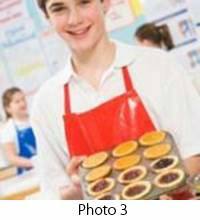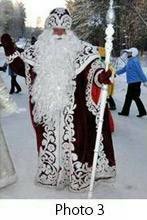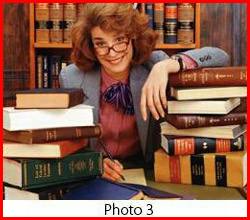В рамках ВПР в 7 классе, да и ранее в программах обучения английскому языку часто встречается задание по описанию картинки. «Ничего сложного!» — скажете вы. А вот и нет! Просто сказать «I see trees so green, red roses too…» — уже недостаточно. Оказывается, есть определённые шаблоны описания картинок, которым следует придерживаться. Об этом ниже.
Шаблон описания картинки на английском
Описание картинки можно схематично представить, как ответы на вопросы:
- Где и когда? (where and when the photo was taken)
- Кто/что? (whatwho is in the photo)
- Какой?
- Что делает и как? (what is happening)
- Ваше отношение к фото
Данные компоненты можно менять местами в зависимости от вашего желания и конкретной картинки. Давайте разберем каждый компонент в отдельности.
Где и когда?
В начале описания неплохо бы рассказать об истории картинки / фото, если вы ее знаете. Когда фотография была сделана? При каких обстоятельствах.
Ответ можно начать следующим образом:
- You know, I am fond of photography and I keep my best photos in my album. Please, have a look at this one. I took this photo last year in Greece. — Вы знаете, я увлекаюсь фотографией и храню свои лучшие фото в альбоме. Пожалуйста, взгляните на этот снимок. Я сделал его в прошлом году в Греции.
Если вы не знаете деталей, то можете предположить:
- It was (probably) taken inside / outside. — Возможно, она сделана в помещении / на улице.
- In this picture the action is taking place in (the house; the living room; the gym; the swimming pool; the theme park etc.). — На этой картинке действие происходит в (доме, зале, спортзале, бассейне, парке и т.д.).
- The photo/picture shows — Фото/картинка показывает.
- It wastaken by/in — Она была сделана. Она была нарисована.
- It’s a black-and-white/coloured photo. — Это черно-белая/цветная картинка.
Кто/что?
Начинаем с основного акцента картинки. Что на первом плане? Что на второстепенном?
- In the picture I can see.. — На картинке я могу видеть…
- There’s / There are — Здесь есть
- In the background you can see — На заднем плане вы можете видеть…
- In the foreground there is … — На переднем плане…
Можно использовать более сложные фразы с предлогами места:
- at the top/bottom of the picture — наверху/внизу картинки
- in the middle of the picture — в середине картинки
- on the left/right of the picture — слева/cправа картинки
- next to — рядом
- in front of — спереди
- behind — сзади
- near — рядом
- on top of — наверху
- under — под
Если что-то непонятно, можно использовать фразы:
- It looks like a — Это выглядит как…
- It might be a — Это возможно…
- Hecouldbe — Он мог бы быть
- Maybe, it’s a — Возможно это…
Какой?
Тут перечисляем все характеристики внешности людей и свойства предметов, изображенных на картинке.
- The girl / boy looks like she/he is about … years old. — Девочке / мальчику около … лет.
- She / he has … eyes and dark / fair hair — У неё / него … глаза и тёмные / светлые волосы.
- The girl / boy is wearing … — Девочка / мальчик одет в …
- I guess she / he is quiet and kind. — Мне кажется, что она / он спокойный и добрый.
Описание одежды можно скомбинировать с описание погоды.
- It looks like a sunny day outside. — Похоже, на улице солнечный день.
- I don’t think it’s very warm though. They both are wearing thick sweaters. — Хотя не думаю, что здесь очень тепло. На них обоих толстые свитера.
- It’s sunny though I can see their shadows on the ground. — Солнечно, хотя я вижу их тени на земле.
- I think it must be warm weather. — Думаю, сейчас теплая погода.
- The sun’s shining. — Светит солнце.
- The gold court looks very green. — Золотой двор выглядит очень зеленым.
- I can see trees in the background and a bit of blue sky. — Я вижу деревья на заднем плане и немного голубого неба.
- It looks very peaceful. — Выглядит очень спокойно.
Что делает и как?
Все действия описываем во времени Present Continuous:
- The man is …smiling.- Мужчина улыбается.
- The people are …working. — Люди работают.
- It’s raining. — Идет дождь
- Looking at these people / this girl / this boy I get the impression that they are/ she is / he is … (having dinner; watching a film; doing their homework etc.) — Глядя на этих людей/эту девочку/этого мальчика создаётся впечатление, что они/она/он… (смотрит фильм, делает домашнюю работу и т.д.).
Ваше отношение к фото
- I like the picture because the atmosphere is peaceful. — Мне понравилось картинка, потому что атмосфера дружелюбная.
- I like this picture as it is bright and colorful, full of positive emotions, and it makes me think of summer / winter / autumn / spring. — Мне понравилось картинка, потому что она яркая и красочная, полна позитивных эмоций, и напоминает мне лето, зиму, осень, весну и т.д.
Примеры описания картинки / фото на английском
Вариант 1
In this picture I see a young woman lying on the grass, smiling and listening to music with headphones.
She seems to be in her early twenties. She’s got long blond hair and a charming smile. She’s wearing a white T-shirt. She could be listening to some energetic rock music, because she looks happy and engaged. Maybe she is listening to the best album of her favourite singer and is singing along. By the way, it can be even not music at all. She could be listening to a humorous audiobook that makes her smile. She may be listening to an audiocourse, learning a foreign language and trying to repeat the phrase after the speaker.
I can see an engagement ring on her finger. Perhaps she has just got engaged and is trying to choose the song for the first dance with her fiancé during the wedding ceremony. I know how hard it can be because I’m getting married in August and I’ve been listening to various songs, trying to choose those to be played on my wedding day. I fall asleep with my headphones on and spend my working hours in a similar pair of headphones, not to irritate my fellow-workers with my music.
Перевод
На этой картинке я вижу девушку, лежащую на траве, улыбающуюся и слушающую музыку в наушниках.
На вид ей двадцать с небольшим. У нее длинные светлые волосы и очаровательная улыбка. Она одета в белую футболку. Возможно, девушка слушает энергичную рок-музыку, потому что-она выглядит счастливой и поглощенной музыкой. Может быть, она слушает лучший альбом любимого исполнителя и подпевает. Кстати, она может слушать вовсе и не музыку. Может быть, она слушает юмористическую аудиокнигу и именно поэтому улыбается. Возможно она слушает аудиокурс для изучения иностранного языка и пытается повторить фразу за диктором.
На пальце у нее кольцо, подаренное в честь помолвки. Возможно, она недавно обручилась и выбирает песню для первого танца молодоженов во время свадебной церемонии. По себе знаю, как это трудно, потому что я выхожу замуж в августе и слушаю разные песни, пытаясь выбрать те, которые будут звучать на моей свадьбе. Я засыпаю в наушниках и сижу в наушниках на работе, чтобы не надоедать коллегам своей музыкой.
Вариант 2
This picture shows a seaside resort in summer. The weather is hot that’s why the beach is full of people. There are no clouds in the sky and it looks light blue. Аs for the sea, it is a bit rough, I can see the waves, so the light wind is probably blowing.
In the foreground just a bit to the right there is a big merry-go-round. I can guess that a lot of children are riding horses there. They may be laughing, shouting, in other words, they are having fun.
Another kind of attraction is situated to the left of the first one. It looks smaller and at first sight you can suppose that it is a merry-go-round, too. But if you look closer, you can see that it might be a kiosk with some food or souvenirs because people are standing around probably looking for something to buy.
The beach is very crowded. The people are lying on the sand and swimming in the sea. In the background I can make out the outline of a white pier which stands out against the blue sky.
As for me, I enjoyed a lot describing this cheerful picture. This sunny beach makes me feel optimistic because in a few weeks I hope I will be enjoying swimming in the sea, too.
Перевод
На этой фотографии изображен морской курорт летом. Погода жаркая, поэтому на пляже много людей. На небе нет облаков, оно выглядит светло-голубым. А что касается моря, то здесь немного неспокойно, я вижу волны, так что, наверное, дует легкий ветерок.
На переднем плане, чуть правее, большая карусель. Могу предположить, что там много детей катаются на лошадях. Они могут смеяться, кричать, другими словами, им весело.
Еще одна достопримечательность находится слева от первой. Выглядит меньше, и на первый взгляд можно подумать, что это тоже карусель. Но если вы присмотритесь, то увидите, что это может быть киоск с едой или сувенирами, потому что люди стоят вокруг, вероятно, ищут что-нибудь купить.
Пляж очень многолюдный. Люди лежат на песке и купаются в море. На заднем плане я могу различить контур белого пирса, который выделяется на фоне голубого неба.
Что касается меня, мне очень понравилось описывать эту веселую картину. Этот солнечный пляж вселяет во меня оптимизм, потому что я надеюсь, что через несколько недель я тоже буду получать удовольствие от купания в море.
Вариант 3
In this picture, I can see people giving gifts to each other. They must be a family: a couple with two children and an older couple, who are probably a grandmother and a grandfather. It must be Christmas time as there is a Christmas tree in the background on the right.
In the middle of the picture, we can see a girl and her grandmother. The woman is wearing glasses and has gray hair. She hasn’t received a gift yet, she is giving a big box to a boy, sitting next to her. He is looking gratefully at his granny.
His parents on the right side are looking into each other’s eyes and smiling.
The girl is opening her gift box and seems to be very excited to see what is inside.
On the left, there is a man, probably a husband of the older woman. He is waiting for his turn to give his present.
All people are wearing light-colored clothes on top. The men are standing, the rest are sitting on a cozy sofa in a spacious, light room.
Everybody seems to be happy and enjoy the family moment.
Перевод
На этой картинке я вижу, как люди дарят друг другу подарки. Они должны быть семьей: пара с двумя детьми и пара постарше, вероятно, бабушка и дедушка. Должно быть, Рождество, так как на заднем плане справа изображена рождественская елка.
В середине картинки мы видим девочку и ее бабушку. Женщина в очках, у нее седые волосы. Она еще не получила подарка, она дарит большую коробку мальчику, сидящему рядом с ней. Он с благодарностью смотрит на свою бабушку.
Его родители справа смотрят друг другу в глаза и улыбаются.
Девушка открывает свою подарочную коробку и, кажется, очень взволнована, увидев, что внутри.
Слева мужчина, вероятно, муж пожилой женщины. Он ждет своей очереди сделать подарок.
Сверху все люди одеты в светлую одежду. Мужчины стоят, остальные сидят на уютном диване в просторной светлой комнате.
Кажется, что все счастливы и наслаждаются семейным моментом.
Описание картинки в ЕГЭ
Описание картинки для ЕГЭ по сути мало чем отличается от шаблона выше. Единственное, дополнительно могут стоять вопросы про личное отношение к фото, почему вы его выбрали и т.п.
Вот несколько вариантов описания фото для ЕГЭ по английскому языку.
Вариант 1
Well, I have chosen photo number 1. Look at this. I took it last year when I have a big holiday with my friends in Phuket. In the picture you can see a very popular beach Nai Harn. There is clear blue water, green mountains and yellow sand. There we walked with my friends Anna and Viktor and enjoyed such a sunny and hot day. I decided to take this photo because it is a really wonderful place for me. I wanted to keep this time in my memory. I would like to show you this picture because I know that you like sea and beautiful beaches. Maybe it will inspire you to go to Phuket. That’s all I wanted to say.
Перевод
Что ж, я выбрала фото №1. Посмотри на это. Я сделал его в прошлом году, когда у меня большой отпуск с друзьями на Пхукете. На фото очень популярный пляж Най Харн. Здесь чистая голубая вода, зеленые горы и желтый песок. Там мы гуляли с моими друзьями Анной и Виктором и наслаждались таким солнечным и жарким днем. Я решил сделать это фото, потому что это действительно чудесное место для меня. Я хотел сохранить это время в своей памяти. Я хочу показать вам эту фотографию, потому что знаю, что вам нравится море и красивые пляжи. Может быть, это вдохновит вас поехать на Пхукет. У меня все.
Вариант 2
I’ve chosen photo number 1/2/3.
You know that I am a regular traveler. From time to time, I visit exotic countries where I usually go windsurfing, diving, and the like.
Well, this photo I took last year when I was on my holidays in Vietnam. That was a wonderful trip full of extreme actions and unforgettable experience. During my trip I was taking lots of pictures, but this one is my favorite.
You can see wonderful yellow fish in the foreground of this photo. In the background you can see rocks of various size and shape.
Actually, nothing much is happening in the photo. Some fish are swimming by in the depth of the see. Besides, the sun is trying to shine through but only some specks of light can be seen.
Why do I keep this photo in my album? Well, I have a lot of pictures from underwater but this one is special. The fish look very unusual and admirable, and I keep this photo as a striking demonstration of diversity and uniqueness of sea life.
I decided to show the picture to you because I’d like to share my impressions from diving with you. I want you to see how beautiful the bottom of the sea may be and what unusual things you are faced there with.
Well, I hope you understand my feelings and how much I’m into traveling and diving. By the way, next year I am going to visit Vietnam one more time. Don’t you want to join me? If yes, then we will discuss everything next time. Now we have to go to school.
Перевод
Я выбрала фото номер 1/2/3.
Знаете, я регулярно путешествую. Время от времени я езжу в экзотические страны, где обычно занимаюсь виндсерфингом, дайвингом и тому подобным.
Ну, это фото я сделал в прошлом году, когда отдыхал во Вьетнаме. Это была прекрасная поездка, полная экстремальных действий и незабываемых впечатлений. Во время поездки я делал много снимков, но этот — мой самый любимый.
На переднем плане фотографии вы видите чудесных желтых рыбок. На заднем плане можно увидеть камни разного размера и формы.
Собственно на фото ничего особенного не происходит. В глубине моря проплывает какая-то рыба. Кроме того, солнце пытается просвечивать, но видны лишь некоторые блики.
Почему я храню это фото в моем альбоме? Ну, у меня много фотографий из-под воды, но эта особенная. Рыбы выглядят очень необычно и достойно восхищения, и я сохраняю это фото как яркую демонстрацию разнообразия и неповторимости морской жизни.
Я решил показать вам картинку, потому что хочу поделиться с вами своими впечатлениями от дайвинга. Я хочу, чтобы вы увидели, насколько красивым может быть морское дно и с какими необычными вещами вы там сталкиваетесь.
Что ж, надеюсь, вы понимаете мои чувства и то, как я люблю путешествовать и нырять. Кстати, в следующем году я собираюсь еще раз посетить Вьетнам. Разве ты не хочешь присоединиться ко мне? Если да, то все обсудим в следующий раз. Теперь пора в школу.
Вариант 3
So I choose photo number 2.
This photo was taken last summer when I and my father went to our favourite lake to do some fishing during the weekend.
In the foreground of the picture we can see me and my dad smiling as we have caught the biggest fish I have ever seen. Here I am wearing light clothes as that summer was extremely hot. In the background of the picture we can see an almost deserted beach as only local people know about this place.
In this picture my father is sitting on his knee while I am standing. We are holding the fish we caught several minutes before. The sun is shining so brightly that my father is wearing sunglasses.
I decided to keep this photo so that I could remember that amazing weekend and that great experience. I can open it and remember every detail of it any time I want.
So as you are choosing what to do on the forthcoming weekend, I decided to show you this picture. Maybe you will be inspired to do something like that. That is all I wanted to say.
Перевод
Итак, я выбираю фото №2.
Это фото было сделано прошлым летом, когда мы с отцом пошли на наше любимое озеро, чтобы порыбачить на выходных.
На переднем плане картины мы видим меня и моего отца, улыбающихся, когда мы поймали самую большую рыбу, которую я когда-либо видел. Здесь я ношу легкую одежду, потому что то лето было очень жарким. На заднем плане картины мы видим почти безлюдный пляж, о котором знают только местные жители.
На этой фотографии мой отец сидит на коленях, а я стою. Держим рыбу, которую выловили несколько минут назад. Солнце светит так ярко, что мой отец носит солнцезащитные очки.
Я решил сохранить это фото, чтобы запомнить те замечательные выходные и те замечательные впечатления. Я могу открыть его и вспомнить каждую деталь в любое время, когда захочу.
Итак, пока вы выбираете, чем заняться в предстоящие выходные, я решил показать вам эту картинку. Может быть, вас вдохновят на что-то подобное. Это все, что я хотел сказать.
Эти фотографии я взял из Решу ВПР. В конце поста я приложил ссылки на дополнительные описания картин.
Начнем с плана описания картинок.
План описания картинок на английском языке для ВПР в 7 классе
Я разработал следующий план:
- вступление (вступительные слова)
I’d like to describe picture one — Мне бы хотелось описать картинку номер один
- кого мы видим на картинке
In the picture I can see a girl — На фотографии я вижу девочку
- место, где фото было сделано (в помещении или на улице / на природе)
The picture was taken outside — Фотография была сделана на природе
- место действия (конкретное место)
The action is taking place in the park — Действие происходит в парке
- переход к тому, что человек делает на картинке (looking at the picture, I can see; действие описываем в Present Continuous)
Looking at the picture, I can see that the girl is running — Глядя на картинку, я вижу, что девочка бегает
- внешность человека (обычно это одежда. подсказка: если не знаете как описать одежду, говорите casual clothes, formal clothes, summer clothes, winter clothes, autumn clothes, spring clothes)
The girl is dressed in casual clothes — Девочка одета в повседневную одежду
- возраст человека (прикиньте, сколько человеку лет)
The girl is about ten years old — Девочке около десяти лет
- нравится ли картинка или нет (всегда говорите, что нравится)
I like the photo — Мне нравится фотография
- почему (скажите, что действие на картинке вам нравится и, возможно, вы сами этим занимаетесь)
The photo is great because I love running too — Фото отличное потому, что я тоже обожаю бегать!
Теперь давайте перейдем к клише, примерам и шаблонам описания картинок на английском для ВПР в 7 классе.
Описание Photo 1. Девочка на лошади рядом с домом машет и улыбается в камеру
Перевод:
Я хотел бы описать картинку номер один. На фотографии мы видим девочку. Фотография была сделана на улице. На фотографии действие происходит рядом с многоквартирным домом. Глядя на девочку, я вижу, что она едет на лошади. Она улыбается и машет рукой фотографу. На вид девочке 7 лет. Она одета в повседневную джинсовую одежду. Девочка выглядит спортивно и кажется очень энергичной. Мне нравится эта фотография, потому что я вижу, что девочка получает удовольствие от того, что делает. Глядя на эту фотографию, я тоже хочу покататься на лошади!
Описание Photo 2. Девушка смотрит в планшет на диване
Перевод:
Я хотел бы описать картинку номер два. На фотографии мы видим женщину. Снимок сделан в помещении. На фотографии действие происходит в комнате. Глядя на женщину, я вижу, что она сидит на диване. Она занята своим планшетом. На вид женщине около 30 лет. На ней белый свитер и джинсы. Женщина выглядит заинтересованной. Мне нравится эта фотография, потому что я тоже люблю проводить время со своим планшетом. Я делаю это постоянно.
Описание Photo 3. Улыбающийся мужчина в очках с рюкзаком стоит с красной книгой в парке рядом с домом
Перевод:
Я хочу описать фотографию номер три. На фотографии мы видим мужчину. Фотография была сделана на улице. Погода хорошая. На фотографии действие происходит рядом с домом. Вокруг несколько деревьев. Возможно, мужчина находится в парке. Глядя на фотографию, я вижу, что мужчина держит в руках красную книгу. Он улыбается. Мужчина одет в футболку и джинсы. На нем также очки и рюкзак. На вид мужчине 30 лет. Он выглядит хорошо. Мне нравится эта фотография, потому что мужчина проводит свое свободное время за чтением. Я тоже люблю читать!
Я разработал новый крутой гайд по описанию картинок на английском для ВПР в 7 классе. Смотрите прямо сейчас!
Как описать картинку на английском для ВПР в 7 классе на максимальный балл
Немного слов о том, как преуспеть в описании фотографии для ВПР в 7 классе по английскому языку:
1.Выбирайте ту картинку для описания, которая максимально вам понятна. Имеется в виду то, что вы можете:
- отличить место действия;
- пол человека;
- его возраст;
- его внешность;
- и то, чем он занимается.
Эти моменты не всегда понятны на некоторых картинках, что делает их сложными для описания.
2.Обязательно расскройте все пункты плана, которые я привел в начале статьи.
3.Постарайтесь набрать 7 предложений в вашем описании. Это довольно просто, если следовать пунктам плана.
4.Выучите все пункты плана и клише их описания, чтобы подставить их в выбранную вами картинку.
5.Используйте Present Continuous для описания того, что происходит на картинке. Например:
- the girl is running — девочка бегает;
- the boy is smiling — мальчик улыбается;
- she is walking — она гуляет;
- they are sitting — они сидят;
- they are looking into the camera — они смотрят в камеру;
- the person is doing nothing — человек ничего не делает.
6.Используйте такие грамматические конструкции, как:
- инфинитив (I want to tell you that I like the picture very much — Я хочу сказать вам, что мне очень нравится картинка);
- герундий (I like spending time outside — Я люблю проводить время на улице);
- причастие (Looking at the photo, I can say that… — Глядя на фото, я могу сказать, что…).
Они сделают речь более насыщенной и позволят получить высший балл.
7.Составьте ваше высказывание и проговорите его про себя столько раз, сколько получится за полторы минуты для подготовки. Так вы будете увереннее.
8.Не спешите. Говорите плавно, четко и размеренно.
9.Если вы сделали ошибку при описании картинки, не пугайтесь. Используйте следующие фразы, чтобы поправить себя:
- I’m sorry, this is not what I wanted to say — Извините, это не то, что я хотел сказать;
- Let me rephrase that — Позвольте мне перефразировать это;
- I made a mistake, I was meaning to say that — Я сделал ошибку, я намеревался сказать, что.
Эти фразы можно сказать сразу после того, как вы сделали ошибку.
10.Если вы вдруг забыли, что нужно сказать дальше, а время идет, используйте фразы-филлеры. Они заполнят пустой промежуток, пока вы думаете, что сказать дальше. Фразами-филлерами могут быть:
- Okay, give me a second to think — Так, дайте мне секунду подумать;
- I need to think about what to say next — Мне надо подумать о том, что сказать дальше;
- I need a moment to gather my thoughts — Мне нужно какое-то время, чтобы собраться с мыслями.
Еще больше описаний картинок для ВПР в 7 классе по английскому языку
Ознакомьтесь с дополнительным описанием фотографий по ссылкам ниже:
- Описание картинки для ВПР в 7 классе — (Девочка сидит на заборе и смотрит в телефон, Рыжий мальчик звонит по старому телефону на фоне ковра)
- ВПР 7 класс. Английский. Описание фото — (Мальчик в фартуке стоит на кухне со шваброй, Мужчина в рубашке гуляет по улице возле забора)
- Английский. ВПР 7 класс. Фотоописание — (Улыбающаяся женщина в красном свитере в магазине, Мальчик с гитарой сидит на кровати на переднем плане, а девочка играет на пианино на заднем плане)
- ВПР 7 класс. Описание фото на английском — (Мальчик катается на лошади, Мальчик и девочка вместе играют на пианино)
- Как описать картинку для ВПР в 7 классе
- Подготовиться к ВПР 7 по английскому — (Девочка в магазине выбирает продукты, Девушка сидит за столом в кафе, Девушка разговаривает по телефону на улице, Мальчик стоит в костюме пирата у елки с подарками, Девочка стоит со шваброй в классе, Мальчик держит на руках собаку, Девочка в оранжевом платье с роликами на ногах сидит на лавочке в парке, Девочка с пылесосом убирается в комнате, Девочка-повар готовит на кухне, Девочка держит рыжего кота, Мальчик на природе с кроликами)
- Описание фото: ВПР 7 класс, английский (Девочка пишет, Женщина в гамаке с книгой, Мальчик у доски)
- Описание картинки ВПР 7, Задание 3 №961 — (Девочка стоит у доски и думает, Женщина-тениссистка фотографирует себя на корте, Мальчик собирает пазлы)
- ВПР 7. Описание фото. Задание 3 №135 — (Женщина в спортзале на тренажере, Мужчина бежит по дороге, Женщина в супермаркете)
- Описание фото. Задание 3 №138, ВПР 7 — (Женщина катается на лыжах, Мужчина играет в теннис, Мальчики играют в хоккей)
- Описание фото. ВПР 7, Задание 3 №140 — (Девушка сидит за столом, приставила кулаки к вискам и кричит, Мальчик читает книгу за столом, Мальчик сидит на книгах и читает книгу)
- Описание фото. ВПР 7. Задание 3 № 960 — (Девочка, одетая в традиционно русскую одежду, сидит в кресле у елки и держит мишку в руках, Улыбающаяся девочка поймала рыбу на удочку, Пожилой мужчина в библиотеке держит книгу в руках и смотрит в камеру)
- Описание фото: туристка делает селфи
- Описание фото: мальчик за столом
- Описание фото: лыжник в лесу
- Готовые описания фото, ВПР 7 английский — (Улыбающаяся женщина фотографирует зимний лес, Улыбающаяся девочка сидит за кухонным столом с тетрадками, учебниками и ноутбуком, Улыбающийся мужчина играет в волейбол на улице)
- Примеры описания фото, ВПР 7 английский — (Мужчина в библиотеке держит книги и куда-то идет, Женщина гуляет в парке, Мужчина-врач улыбается в больнице)
- Описание фото на английском из РешуВПР 7 — (Девушка стоит у холста с палитрой в руке и рисует, Девушка выбирает одежду в магазине, Мальчик сидит в телефоне за столом)
- Описание трех фото для ВПР 7, английский — (Улыбающийся мальчик лежит на кровате и слушает музыку с телефона в наушниках, Улыбающаяся женщина сидит на пледе в парке, скрестив ноги, Врач в больнице со стетоскопом на шее показывает знак окей)
- Пример описания картинки на английском — (Девочка надувает мыльные пузыри в комнате, Девочка в лесу держит ягоды в руке)
- ВПР, 7 класс, английский, описание фото — (Девушка на кухне проверяет, готов ли суп, Мальчик лежит на надувном матрасе в речке и показывает пальцы вверх)
- Фотоописание для ВПР по английскому — (Девушка в парке поднимает желтые листья с земли осенью, Задумавшийся мужчина сидит на кухне за столом, на котором лежит тарелка с едой)
- Как описать картинку для ВПР в 7 классе — (Девочка в розовом платье сидит на детском стуле с мишкой, Женщина в светло-синем пиджаке и белых брюках показывает что-то на доске)
- Готовое описание картинки на английском — (Женщина в фартуке и перчатках моет окно тряпкой, Девочка с цветочками в волосах лежит перед книгой, опираясь на руки)
- Английское описание картинки для ВПР 7 — (Женщина смотрит на одежду. Она думает и выбирает, что надеть, Мальчик смотрит на синего попугая, который сидит на его левом плече)
- I’d like to describe picture number (Мужчина в белой футболке сидит и читает книгу; Девочка держит щенка в руках на природе)
- Описать картинку на английском пример (Девушка с пакетами рядом с елкой зимой; Мужчина-повар смотрит отчет и разговаривает по телефону на кухне)
- Описание картинки на английском, ГДЗ (Улыбающаяся девочка читает синюю книгу за столом; Девочка в розовом платье играет на флейте на природе)
- Описать картинку на английском ВПР 7 класс (Женщина в красном свитере держит бутылку в самолете; Мужчина разговаривает по телефону в аэропорте)
- Как описать картинку для ВПР в 7 классе по английскому (Девочка катается на ледянке с горки зимой; Девушка с лошадью в лесу зимой)
- Описание фото на английском | ВПР 7 класс (Девушка в синем бегает в парке; Мальчик лежит на кровати с планшетом)
- План описания фото для ВПР в 7 классе (Девочка в зеленой безрукавке с зеленым мячом в зале; Девушка выбирает одежду)
- Описать фото. ВПР. 7 класс. Английский (Мальчик у доски)
- Гайд по Описанию Картинок на Английском (Девочка в парке кормит голубей осенью; Девушка-художник с палитрой и кисточкой в руках и с мольбертом на заднем плане)
- Описание картинки ВПР 7 класс 2023 (Мальчик у доски решает примеры (1+2 =, 1+1 = 2); Девушка наряжает елку в комнате; Мужчина читает красную книгу на диване)
- Как описать картинку в 7 классе ВПР 2023 (Мальчик с геймпадом (контроллером) в руках играет в приставку на телевизоре; Больная девочка лежит в кровати рядом со столом с лекарствами и градусником; Женщина сидит на лавочке на природе и что-то читает)
- Как описать картинку: ВПР, 7 класс, английский (Мальчик в рубашке с короткими рукавами и наушниками сидит за компьютером; Мальчик сидит на траве в парке, а рядом лежит собака; Мечтательная девочка лежит на полу в новогоднем свитере и шапке рядом с елкой и что-то пишет)
- Описать картину на английском ВПР 7 класс (Мальчик играет в машинки; Мальчик собирает постройку из камней на пляже; Улыбающаяся женщина ест за столом)
- Описание картинки на английском: ответы (Английский язык. Всероссийская проверочная работа. 7 класс. Типовые задания. 25 вариантов. Ватсон Е.Р. Картинки: Девочка выбирает книги в библиотеке; Женщина взвешивает продукты в продуктовом магазине; Девочка на лошади)
- ВПР, 7 класс, английский, описание фото (Девочка закрыла глаза руками, дети играют в прятки; Мальчик что-то пишет за столом в классе; Раздраженная женщина за столом перед компьютером)
- Фотоописание на английском, ВПР 7 класс (Мальчик сидит на дереве у реки; Мужчина в магазине показывает батон хлеба / колбасы; Мальчик ест суп)
- Описание картинки на английском: ВПР 7 (Девочка с котом на подоконнике; Женщина в магазине с полной тележкой продуктов; Мужчина / женщина в саду)
- ВПР по английскому, 7 класс, описание картинок (Девушка занимается гимнастикой на гимнастическом мяче; Девочка пишет за столом с лампой и глобусом; Парень играет в мяч с собакой на природе)
- ВПР 7 класс, английский, описать картинку (Девочка сидит под зонтиком; Девушка красит стакан; Девочка сидит на Красной площади)
- Как описать картинку на английском для ВПР в 7 классе (Девушка сидит на полу и занимается растяжкой; Девушка в купальнике стоит на одной ноге на пляже; Девушка обнимает кота рядом с елкой)
- Шаблон описания картинки ВПР 7 класс (Повар готовит блюдо; Девочка лежит на ковре и что-то пишет; Девушка с камерой на улице)
- ВПР 7 Класс | Английский | Фотоописание (Девочка с подарками рядом с елкой; Женщина кормит лошадь сеном; Мальчик строит пирамиду изо льда)
- Как описать фото, ВПР 7 класс (Девочка рисует красками на холсте; Мальчик что-то ест зимой; Мальчик поймал рыбу)
- Описание картины, ВПР 7 класс, английский (Женщина-ветеринар гладит собаку в ветеринарной клинике; Женщина-фотограф фотографирует аэродром на фоне самолета; Ребенок сидит на качели)
- Клише описания картинки | ВПР 7 класс (Женщина выбирает продукты в магазине; Уставшая женщина изучает книги; Ребенок с ведерком и совком играет с песком)
- Описание картинки на английском | ВПР 7 (Мальчик лежит на кровати и читает книгу под одеялом; Мальчик решает примеры у доски; Женщина катается на коньках на катке)
- Описание картинки | Ватсон | ВПР 7 класс (Девочка облокотилась на подоконник и смотрит в окно; Мальчик играет в пляжный волейбол; Девочка катается на ватрушке с горки зимой)
- Тест 17 | Описание картинки | Ватсон | ВПР 7 (Девочка рисует мелком на асфальте; Девочка катается на лыжах в лесу; Мальчик ест бургер)
- Подготовиться к ВПР 7 | Описание картинки | English (Девочка катается на горных лыжах; Женщина выбирает продукты в магазине; Девочка читает книгу на природе)
- Как описывать картинку на английском, 7 класс (Мальчик с чемоданом ждет поезда на железнодорожной станции; Мальчик играет с машинками на столе; Мальчик плывет по реке на байдарке)
- Описание фотографии на английском | Клише (Мальчик в наушниках слушает музыку; Девочка с фотоаппаратом; Мужчина в пиджаке смотрит отчеты на работе)
- Картинки для описания | ВПР, 7 класс (Мальчик нырнул в бассейн; Мальчик катается на велосипеде; Мальчик играет в снежки)
- Описание картинки на английском | ВПР 7 класс (Мальчик держит собаку на руках зимой; Женщина поливает цветы; Мальчик сидит в самолете)
- Найти описание картинки | ВПР 7 класс (Мальчик лежит на диване и читает книгу; Мальчик играет в баскетбол; Девушка с листьями в парке)
- Попросить описание картинки | ВПР 7 класс (Девочка ест десерт; Девочка катается на скейтборде на одной ноге; Мальчик собирает цветочки в парке)
- Получить описание картинки | ВПР 7 класс (Мальчик жмет руку роботу; Ребенок катается на роликах; Повар приготовил бургеры)
Об описании фото для ВПР в 7 классе по английскому
📢 Узнайте больше об описании фото и подготовке к ВПР по английскому языку. Запишитесь на бесплатное пробное индивидуальное занятие к хорошему репетитору по английскому. Наши ученики делают существенный прогресс в изучении языка уже после первого урока. Убедитесь в этом сами!
Вы также можете посмотреть другие описания фото. Я собрал внушительную коллекцию.
Мы рассмотрим задание по описанию фотографии в ВПР по английскому языку для 7 класса, узнаем как можно быстро к нему подготовиться, какие слова и грамматические конструкции при ответе будут полезны, что надо сказать для получения максимального балла и в конце изучим систему оценивания. Это именно то задание, где очень важна предварительная подготовка, которая не займет много времени, но в итоге будет очень полезна. За монологическое высказывание учащийся может получить 8 баллов, что составляет более четверти от всех баллов за выполнение проверочной работы. Минимальный проходной балл за всю работу это 13.
Таблица перевода баллов в отметки по пятибалльной шкале
| Отметка по пятибалльной шкале |
«2» |
«3» |
«4» |
«5» |
|
Первичные баллы |
0–12 |
13–20 |
21–26 |
27–30 |
В этом задании необходимо выбрать одну фотографию из трёх и описать человека на ней. В демоверсии фото черно-белые и на экзамене скорее всего будут такие же. Именно поэтому цвета как объект для описания в этой разработке не рассматриваются.
У ученика будет полторы минуты на подготовку и не более 2 минут для ответа. Должен получиться связный рассказ из 7-8 полных предложений, но можно сказать и больше. План ответа состоит из 5 пунктов это.
- the place — место действия
- the action – действие, то что происходит на картинке
- the person’s appearance — внешность человека
- whether you like the picture or not — нравится ли вам картинка или нет
- why- почему вам она нравится или не нравится
Вам нужно начать с фраз I’d like to describe picture number… (Я хотел бы описать картинку номер) и The picture shows… ( Картинка показывает…)
В дальнейшем чтобы не повторятся, слово «Picture» можно заменить на «Photo» фотография или «Shot» снимок.
Picture/Photo/Shot
А вместо The picture shows использовать The picture depicts, либо In the picture you/we/I can see.
Давайте посмотрим, что можно сказать по каждому пункту, и какие слова будут полезны.
В первом пункте имеет смысл сначала указать, кто изображён на картинке, а уже потом место действия. Это логично, поскольку уже в следующем пункте указать действие без исполнителя затруднительно.
Таких слов как a man, a woman, a girl, a boy вполне достаточно.
| Слово |
Транскрипция |
Перевод |
|
a man |
ə mæn |
мужчина |
|
a woman |
ə ˈwʊmən |
женщина |
|
a girl |
ə gɜːl |
девочка |
|
a boy |
ə bɔɪ |
мальчик |
Будет нелишним пустить в ход вводные словосочетания I think / I consider / To my mind
Можно, как сказать всё в одном предложении, так и разбить на два.
К примеру:
In the picture you can see a boy in the classroom.
или
In the picture you can see a boy. Тo my mind, he is in the classroom.
Место действия может быть практически любое.
| Слово |
Транскрипция |
Перевод |
|
at the theatre |
æt ðə ˈθɪətə |
в театре |
|
at the cinema |
æt ðə ˈsɪnəmə |
в кино |
|
at the museum |
æt ðə mju(ː)ˈzɪəm |
в музее |
|
at the swimming pool |
æt ðə ˈswɪmɪŋ puːl |
в бассейне |
|
at the library |
æt ðə ˈlaɪbrəri |
в библиотеке |
|
at the shop |
æt ðə ʃɒp |
в магазине |
|
at the port |
æt ðə pɔːt |
в порту |
|
at the railway station |
æt ðə ˈreɪlweɪ ˈsteɪʃən |
на вокзале |
|
at the concert |
æt ðə ˈkɒnsə(ː)t |
на концерте |
|
at the exhibition |
æt ði ˌɛksɪˈbɪʃən |
на выставке |
|
at the stadium |
æt ðə ˈsteɪdiəm |
на стадионе |
|
at the stop |
æt ðə stɒp |
на остановке |
|
at the factory |
æt ðə ˈfæktəri |
на заводе |
|
at school |
æt skuːl |
в школе |
|
at the lesson |
æt ðə ˈlɛsn |
на уроке |
Некоторые из них используются с предлогом at, другие с in или on.
| Слово |
Транскрипция |
Перевод |
|
in the room |
ɪn ðə ruːm |
в комнате |
|
in the car |
ɪn ðə kɑː |
в машине |
|
in the water |
ɪn ðə ˈwɔːtə |
в воде |
|
in the wood |
ɪn ðə wʊd |
в лесу |
|
in the park |
ɪn ðə pɑːk |
в парке |
|
in the classroom |
ɪn ðə ˈklɑːsrʊm |
в классе |
И если нельзя однозначно понять место или неизвестно нужное слово, лучше использовать inside (внутри, в помещении) или outside (снаружи)
I think the photo was taken inside.
The photo was probably taken outside.
Для описания действия как правило используется время Present Continuous, которое еще иногда называют Present Progressive. Оно образуется с помощью вспомогательного глагола to be в настоящем времени это формы am/is/are и глагола с окончанием -ing.
am/is/are + Ving
Впрочем, глагол am ученик использовать не будет, так как на картинке его нет.
В таблице присутствуют выражения подходящие к большому количеству вариантов. Например: She is having fun. She is sitting. She is smiling. She is looking at the camera. She is working.
| Местоимение/существительное |
Действие |
Транскрипция |
Перевод |
|
He/She |
is having fun |
ɪz ˈhævɪŋ fʌn |
получает удовольствие/ веселится |
|
is looking at the camera |
ɪz ˈlʊkɪŋ æt ðə ˈkæmərə |
смотрит в камеру |
|
|
is smiling |
ɪz ˈsmaɪlɪŋ |
улыбается |
|
|
is thinking |
ɪz ˈθɪŋkɪŋ |
думает |
|
|
is sitting |
ɪz ˈsɪtɪŋ |
сидит |
|
|
is playing |
ɪz ˈpleɪɪŋ |
играет |
|
|
is writing |
ɪz ˈraɪtɪŋ |
пишет |
|
|
is working |
ɪz ˈwɜːkɪŋ |
работает |
|
|
is listening to music |
ɪz ˈlɪsnɪŋ tuː ˈmjuːzɪk |
слушает музыку |
|
|
is running |
ɪz ˈrʌnɪŋ |
бежит |
|
|
is swimming |
ɪz ˈswɪmɪŋ |
плавает |
|
|
is reading |
ɪz ˈriːdɪŋ |
читает |
|
|
is doing homework |
ɪz ˈdu(ː)ɪŋ ˈhəʊmˌwɜːk |
делает домашнюю работу |
|
|
is smiling |
ɪz ˈsmaɪlɪŋ |
улыбается |
Есть так называемые stative verbs, которые в этом времени не используется: like, know, love, realize, hate и многие другие. Но для описания действия они не подходят. поскольку по сути действия не обозначают. Можно сказать и в каком-нибудь дополнительном предложении.
He/she enjoys what he/she is doing.
Ему/ей нравится то, что он/она делает.
Рассказ о внешности человека строится следующим образом. Если речь идет о каком-то признаке, выраженным только прилагательным, то говорится предложения с глаголом to be.
| Местоимение/существительное |
Форма глагола «to be» (am, is, are) |
Признак |
|
He |
is |
tall |
|
She |
is |
beautiful |
|
The boy |
is |
handsome |
|
Her hair |
is |
long |
|
His cheeks |
are |
chubby |
Можно использовать глагол have (has в 3м лице единственного числа). В таком случае после него должно идти существительное.
| Местоимение/существительное |
Форма глагола «have» (have, has) либо выражение have/has got |
Признак |
|
He |
has |
an oval face. |
|
She |
has got |
long hair. |
|
The boy |
has |
large ears |
Это две самые простые конструкции. Лучше конечно использовать более сложные по структуре предложения.
The picture depicts a slim boy with fair hair and pale skin.
Картинка изображает стройного мальчика со светлыми волосами и бледной кожей.
In the picture we can see a rather tall girl with a long plait.
На картинке мы можем увидеть довольно высокую девочку с длинной косой.
Вместе с эпитетами, обозначающими внешний вид человека, можно использовать обстоятельства степени.
| Слово |
Транскрипция |
Перевод |
|
fairly |
ˈfeəli |
довольно |
|
quite |
kwaɪt |
довольно |
|
rather |
ˈrɑːðə |
довольно |
|
very |
ˈvɛri |
очень |
|
too |
tuː |
слишком |
He is rather short.
Он довольно низкий.
She is very beautiful.
Она очень красивая.
Подробно рассматривать все полезные слова с примерами мы не будем. Говоря о внешности, можно сказать, во что одет человек, описать его телосложение, волосы, форму, лица, носа, рост, возраст, цвет кожи, есть ли у него борода, усы, веснушки морщины, привлекательный ли он. Естественно все эти варианты не нужны. Выберите пару из них.
Одежда.
| Подлежащее |
Сказуемое |
Слово |
Транскрипция |
Перевод |
|
The man The woman The girl The boy |
is wearing is in |
a cap |
ə ˈkæp |
шапка |
|
skirt |
skɜːt |
юбка |
||
|
jeans |
ʤiːnz |
джинсы |
||
|
trousers |
ˈtraʊzəz |
брюки |
||
|
a T-shirt |
ə ˈtiːʃɜːt |
футболка |
||
|
a shirt |
ə ʃɜːt |
рубашка |
||
|
a blouse |
ə blaʊz |
блузка |
||
|
a sweater |
ə ˈswɛtə |
свитер |
||
|
a jacket |
ə ˈʤækɪt |
куртка |
||
|
a coat |
ə kəʊt |
пальто |
||
|
a sport outfit |
ə spɔːt ˈaʊtfɪt |
спортивный костюм |
||
|
shoes |
ʃuːz |
туфли |
||
|
boots |
buːts |
ботинки |
||
|
sandals |
ˈsændlz |
сандалии |
||
|
a scarf |
skɑːf |
шарф |
Сводная таблица описания внешности.
| Слово |
Транскрипция |
Перевод |
|
Age |
eɪʤ |
Возраст |
|
baby |
ˈbeɪbi |
младенец |
|
toddler |
ˈtɒdlə |
ребёнок (от 10 месяцев до 2 лет) |
|
youngster |
ˈjʌŋstə |
юноша |
|
teenager |
ˈtiːnˌeɪʤə |
подросток |
|
adult |
ˈædʌlt |
взрослый |
|
to look (thirty) |
tuː lʊk (ˈθɜːti) |
выглядеть на (тридцать) |
|
under forty |
ˈʌndə ˈfɔːti |
под сорок |
|
over (fifty) |
ˈəʊvə (ˈfɪfti) |
за (пятьдесят) |
|
about (twenty) |
əˈbaʊt (ˈtwɛnti) |
около двадцати |
|
middle age/aged |
ˈmɪdl eɪʤd |
среднего возраста |
|
elderly person |
ˈɛldəli ˈpɜːsn |
пожилой человек |
|
Height |
haɪt |
Рост |
|
tall |
tɔːl |
высокий |
|
of medium height |
ɒv ˈmiːdiəm haɪt |
среднего роста |
|
short |
ʃɔːt |
низкий |
|
Build |
bɪld |
Телосложение |
|
slim |
slɪm |
худой |
|
slender |
ˈslɛndə |
стройный |
|
skinny |
ˈskɪni |
тощий |
|
plump |
plʌmp |
пухлый |
|
to be overweight |
ˈəʊvəweɪt |
с избыточным весом |
|
stout |
staʊt |
полный |
|
athletic |
æθˈlɛtɪk |
атлетический |
|
well-built |
wɛl-bɪlt |
хорошо сложенный |
|
broad shouldered |
brɔːd ˈʃəʊldəd |
широкоплечий |
|
Looks |
lʊks |
Внешность |
|
beautiful / pretty |
ˈbjuːtəfʊl / ˈprɪti |
красивая (о женщинах) |
|
handsome |
ˈhænsəm |
красивый (о мужчинах) |
|
attractive |
əˈtræktɪv |
привлекательный |
|
good-looking |
ˈgʊdˈlʊkɪŋ |
с приятной внешностью |
|
plain |
pleɪn |
некрасивый |
|
ugly |
ˈʌgli |
уродливый |
|
Hair |
heə |
Волосы |
|
bushy |
ˈbʊʃi |
густой |
|
long (to the shoulders) |
lɒŋ (tuː ðə ˈʃəʊldəz) |
длинные (до плеч) |
|
short |
ʃɔːt |
короткие |
|
straight |
streɪt |
прямые |
|
wavy |
ˈweɪvi |
волнистые |
|
curly |
ˈkɜːli |
кудрявые |
|
ponytail |
ˈpəʊnɪteɪl |
хвост |
|
plait |
plæt |
коса |
|
bun |
bʌn |
пучок, узел |
|
beard |
bɪəd |
борода |
|
moustache |
məsˈtɑːʃ |
усы |
|
eyebrows |
ˈaɪbraʊz |
брови |
|
eyelashes |
ˈaɪlæʃɪz |
ресницы |
|
bald |
bɔːld |
лысый |
|
Face |
feɪs |
Лицо |
|
round |
raʊnd |
круглое |
|
oval |
ˈəʊvəl |
овальное |
|
angular |
ˈæŋgjʊlə |
узкое |
|
coarse features |
kɔːs ˈfiːʧəz |
грубые черты |
|
soft features |
sɒft ˈfiːʧəz |
мягкие черты |
|
wrinkled |
ˈrɪŋkld |
морщинистое |
|
freckles |
ˈfrɛklz |
веснушки |
|
freckled |
ˈfrɛkld |
веснушчатое |
|
mole |
məʊl |
родинка, родимое пятно |
|
dimple |
ˈdɪmpl |
ямочка (на щеке, подбородке) |
|
Nose |
nəʊz |
Нос |
|
straight |
streɪt |
прямой |
|
hooked |
hʊkt |
с горбинкой |
|
aquiline |
ˈækwɪlaɪn |
орлиный |
|
snub |
snʌb |
курносый |
|
turned-up |
tɜːnd-ʌp |
курносый |
|
Mouth |
maʊθ |
Рот |
|
wide |
waɪd |
широкий |
|
small |
smɔːl |
маленький |
|
narrow |
ˈnærəʊ |
узкий |
|
Complexion |
kəmˈplɛkʃən |
Цвет лица |
|
pale |
peɪl |
бледный |
|
tanned |
tænd |
загорелый |
|
dark |
dɑːk |
смуглый |
Самое простое, на мой взгляд, это выразить свое мнение о внешности человека (красивый, симпатичный и т. д.), указать тип его телосложения (стройный, полный, атлетичный), длину волос (короткие, длинные) и их цвет (темные или светлые).
Для ответа ученику не надо знать все эти слова.
Четвёртый и пятый пункт неразрывно связаны. Можно ответить на них одним предложением с помощью универсальных фраз. Но лучше сказать то, что подходит именно под выбранное изображение:
I like this picture because it is a professional photo and I’m interested in photography.
I like this picture because I am fond of active games/ doing sports/ reading/ watching TV. (здесь мы вставляем действие, указанное нами ранее).
I like this picture because of its lively/cheery atmosphere.
Закончить мы можем так, хотя это не является обязательным.
That’s all I wanted to say about this picture. I hope you liked my answer.
Это все, что я хотел сказать о этой картинке. Надеюсь, вам понравился мой ответ.
Описание картинки экспертом оценивается по четырем критериям.
| Критерии оценивания |
Максимальное количество баллов |
|
решение коммуникативной задачи, |
2 балла |
|
организация текста |
2 балла |
|
лексико-грамматическая правильность речи |
2 балла |
|
произносительная сторона речи |
2 балла |
Коммуникативная задача это самый важный пункт. Если участник ВПР получает по нему 0 баллов, всё задание оценивается в 0. Для того, чтобы этого не случилось, нужно сказать минимум 6 предложений и ответить хотя бы на четыре пункта плана из 5. Для получения максимума следует раскрыть все пункты плана и дать не менее 7 развернутых предложений.
| Критерии оценивания задания 3 (монологическое высказывание с опорой на картинку и пункты плана) |
Баллы |
|
1. Решение коммуникативной задачи* (Содержание) |
2 |
|
Выполнена полностью:
|
2 |
|
Выполнена частично:
|
1 |
|
Не выполнена:
|
0 |
По организации текста легко получить 2 балла, если использовать средства логической связи и следовать плану высказывания. Здесь оценивается логичность ответа. Средства логической связи — это союзы, различные вводные слова и конструкции. Надо сказать хотя бы несколько. Впрочем, and и but будет вполне достаточно.
| Критерии оценивания задания 3 (монологическое высказывание с опорой на картинку и пункты плана) |
Баллы |
|
2. Организация текста |
2 |
|
Высказывание связно и логично; средства логической связи присутствуют |
2 |
|
Высказывание не вполне связно и логично |
1 |
|
Высказывание несвязно и нелогично И/ИЛИ средства логической связи |
0 |
Если есть больше 4 лексико-грамматических ошибок, либо более 2 грубых ученик получает 0 по критерию лексико-грамматическая правильность речи. На два балла необходимо сделать не более 2 ошибок или не делать их вовсе.
| Критерии оценивания задания 3 (монологическое высказывание с опорой на картинку и пункты плана) |
Баллы |
|
3. Лексико-грамматическая правильность речи |
2 |
|
Ошибки практически отсутствуют |
2 |
|
Отдельные ошибки (не более 4-х в сумме, в том числе не более 2-х ошибок, препятствующих коммуникации) |
1 |
|
Более 4-х ошибок |
0 |
Что касается произносительной стороны речи, два балла учащийся получит, если у него нет ошибок или 1-2 негрубых, один балл, если их не более 4, в том числе не более двух грубых. Грубые ошибки это те, которые влияют на понимание сказанного.
| Критерии оценивания задания 3 (монологическое высказывание с опорой на картинку и пункты плана) |
Баллы |
||||||
|
4. Произносительная сторона речи |
2 |
||||||
|
Ошибок нет |
или |
1-2 |
фонетические |
ошибки, |
не |
препятствующие |
2 |
|
Отдельные ошибки (не более 4-х в сумме, в том числе не более 2-х ошибок, препятствующих коммуникации) |
1 |
||||||
|
Более 4-х ошибок |
0 |
Я уверен, что после нескольких тренировок практически каждый сможет хорошо ответить без особых проблем. Главное не зацикливаться на том, что ученик не знает.
How to describe a picture in English?
You could be asked to talk about a picture in the IELTS test. Or in any other test.
You may also need to talk about a picture as part of a presentation or in conversation.
It’s a useful skill to have in English. It helps you to describe things you can see very clearly to others.
So, let’s take a look at how to do it.
Introducing The Main Picture
When talking about the picture or photograph, the first thing you want to say is a general description of it.
You do not need to go into detail immediately. Just introduce what the picture is of — or who it is of — and say one or two sentences about it.
So, if you were talking about the picture above, you might say:
This is a picture of a man. He is jumping in the air and it looks like he is on a beach somewhere.
That is a perfect introduction to the picture. Even if we cannot see the picture, we have a very clear idea of what the picture is in our mind.
You could also say:
This picture shows a man in a pair of shorts. He is on the beach and he is jumping up very high.
If you are introducing a photograph that you took yourself, then you can say this:
I took this picture when I was on vacation with my friend in Greece. He was feeling very happy that day, laughing and jumping around on the beach. So I took a picture of him just as he jumped in the air.
You don’t need to think of details or make it too complex.
Just give a brief introduction of what the picture is, who the person is, what they are doing and where they are.
That is all you need to say at this stage.
The Main Subject
Now you can talk about the main subject of the picture in detail.
The main subject of the picture could be a person or an object. It could be an animal too.
Usually, a picture has a subject. That is the next thing you talk about.
If the Subject is a Person or People
If the subject is a person or people, you need to describe them.
Talk about:
- what the people are doing
- what they look like
- the appearance on their face
- the clothes they are wearing
If you know the person in the picture — or you took the photograph — you need to add more information.
- who the person is
- when the picture was taken
- where you were
- what you were doing
So, if we use the first picture as an example we could say the following:
He is a young black man. He is jumping up high. He looks very happy because he is smiling and has a cheerful expression on his face.
He is just wearing a pair of shorts and it looks like he is on a beach somewhere.
Now if you took the picture, you could say this:
This is a picture of my friend Alex. We were on holiday in Greece last summer and we went to the beach. We were walking on the beach and Alex started jumping around on the sand.
As he jumped into the air, I took a picture of him.
But It Could Be A Picture Of An Object
If it’s an object you need to think about the following things:
- what object can you see?
- can you name the object?
- can you describe the object?
- what about the surroundings of the object?
Take a look at the picture above of the house below.
How to talk about this?
We could say:
This is a picture of a red house. It looks like it is in the middle of a field, probably the countryside. The house is red and the windows are painted white. The house looks kind of small and it also looks empty. I don’t think anyone lives in this house.
In this description, I mention the red house — so we know what it is and what colour it is.
I mention the surroundings — a field and maybe the countryside.
Then I give more description of the house — the colour, the windows and the size.
I also say that I think the house is empty. It doesn’t matter if the house is empty or not — this is just my opinion.
But if I took the picture, I could add more detail.
I could say:
- where I took the picture
- when I took the picture
- why I took the picture
In short, add a little story to the description.
It could sound something like this:
I was walking near my parents’ house. They live in a small town and as I walked across these fields, I saw this house in the middle of nowhere.
It was in the summer, and I just looked at this strange house and had a strong desire to take a picture of it.
But What If The Picture Is Of An Animal?
If the picture is of an animal, you can use similar ways you use to describe a person.
- what the animal is doing
- what it looks like
- the appearance on the animal’s face
Now take a look at the picture of the dog below.
We could talk about it like this:
This is a picture of a dog. I don’t know what kind of dog it is, but it has very short hair and has a light brown colour.
It looks like someone has caught the attention of the dog and it’s raising its paw at the person. Its ears are raised too, like the dog is excited or listening to something.
In this description, I say what the animal is — a dog.
Then a give a brief description of the dog — its hair and colour.
Then I talk about what the dog is doing and why. I also mention the dog’s ears.
If you took the picture yourself, you need to add some elements of story.
- what relationship do you have with the animal? (People often take pictures of their own pets)
- where you were at the time of the picture
- when you took it
It might look something like this:
This is my dog, Bingo. Me and my brother were playing with him in my backyard a few weeks ago and I took this picture just as he raised his paw. My brother was about to throw a ball for Bingo.
Now we have more of a story attached to the picture of the dog.
We know the dog’s name and we know he is male.
Plus, we have some more detail of where it happened and who was there.
Talking About The Background
Once you have described the main subject — the person, the object or the animal — then you have to describe the background.
You can give a general description of the background — just as you do with the main subject of the picture — then you can go into detail.
So if we look at the man jumping on the beach again, what can we see in the background?
You can describe the background generally like this:
In the background, there is a beach and a large part of the picture is the blue sky. There are some clouds in the sky. And if we look at the beach, we can see some people in the far distance.
That is all you need to say. You mention the main things you can see in the background:
- the beach
- the sky
- some clouds
- people on the beach
No need to talk about anything else at this stage.
Let’s look at the picture of the red house again.
Now this picture is a little different. Because we need to talk about the background and the foreground.
The foreground is the part of the picture that is at the front.
In this picture of the house, we need to talk about that too.
So we could say:
In the background, it is mostly sky. The sky looks overcast and grey. And the house is standing on a field. We can see green fields all around the house and in the foreground too.
And at the very front of the picture — out of focus — there are some flowers.
And finally, let’s look at the picture of the dog. There is not much to see, but we still have to describe what is there.
We could say:
In the background, it looks like a wooden fence and a gate behind the dog. And the dog is sitting on a section of concrete. Maybe it is a backyard of someone’s house. There are some cracks in parts of the concrete.
That is all we need to say for each of the three pictures. When you first start to describe the background, just give a brief introduction to what you can see. It is enough.
The next thing we can do is talk about it in detail.
How To Talk About The Details
Once you give your introduction to the background, you can talk about it in more detail.
Let’s look at the man on the beach again.
To talk about the sky might be a little difficult. But we can say what we think or feel about it.
And we can add some more detail when talking about the people on the beach. And if we look clearly, we can see the sea and maybe two or three boats on the sea.
So we could say this:
The sky is very blue, and there are very few clouds. I think this picture must have been taken in the summer. It just looks hot to me.
And there are quite a few people in the background. I can see one man lying down on the sand — maybe he is sunbathing.
The other people are wearing beach clothes — shorts and t-shirts.
And in the far distance, I can see the sea. And on the sea, there are two or three boats, it is not very clear. One boat looks like it has a very high sail.
If you cannot see something very clearly in the picture, don’t worry. It doesn’t matter if you say two or three boats, for example. No one is going to correct you on this.
Just say what you can see.
What about the picture of the red house?
Again, just try to describe what you can see.
You might say something like this:
The house looks like it is built on a ridge on one of the fields. The ground rises up slightly in front of the house. And in the background, it looks like the land is rising down again in the opposite direction.
There is nothing on the grass. Only grass. No flowers or anything else there.
But there are flowers in the foreground. They are white. I don’t know what kind of flowers they are, as they are out of focus.
And between the grass and the flowers, it looks like a path. The ground is grey, and it goes from one side of the picture to the other.
Notice in this section, I said what is not on the grass — nothing, only grass, no flowers or anything else.
It is perfectly acceptable to say what is not in the background, but you cannot just say there is nothing here, nothing there, nothing over there.
The way I say there is nothing is that I focus on one subject of the picture — the grass — and then say what I cannot see on it. Because often we do see things on grass — flowers, birds and the occasional cow.
So that covers how to talk about the main subject and the background. But all three of these pictures are quite simple — just one main object and a plain and simple background with not much going on.
What if the picture was more complex?
How To Describe A Picture with More Complex Details
How to describe a picture that has more content and more details?
Take a look at the picture below.
Notice all the different things in it?
Think about these questions before you begin to talk about the picture.
- what is this a picture of?
- how could you describe this picture in two or three sentences?
- what is the main subject of the picture?
- what is in the background?
- what is in the foreground?
Let’s try to answer all of these questions now.
What Is This A Picture Of?
This is a picture of a woman in a kitchen. The kitchen is white and very modern and has a lot of space. The woman is making something on the stove.
So that’s a basic description of what we can see in the picture. This is an ideal introduction, and it tells us everything we need to know for the beginning.
What Is The Main Subject Of The Picture?
There is a woman in the centre of the picture. She is standing behind a stove and she is stirring something in a pot on top of the stove. She seems happy as she is smiling. And she is wearing a thick grey cardigan.
That tells us a great deal about the main subject. It’s very clear and simple.
What Is In The Background?
Now this is where it gets a little complicated…
Unlike the previous pictures which have a very simple background, this picture has more things in it — plus they are in different parts of the picture.
This is where we use phrases like:
- to the left
- to the right
- at the bottom
- at the top
- in the top right corner
Let’s look at an example of how to describe the background.
In the background of the picture, we can see the kitchen. Directly behind the woman is a counter — and on the counter is a sink.
There are also some books on the counter. To the far left of the picture, we can see a few books stacked together. There is a small orange-coloured object holding the books in place.
And at the other end of the counter, there are a few more books leaning against a cabinet.
Above the counter are some cupboards. They all have white doors. It looks like there are five of them in total. There are some more cupboards below the counter.
The sink looks like it is made of stainless steel. We can see the tap above the sink.
In the background, to the right, there is a cabinet. In the cabinet is an oven and what looks like a microwave oven, too. They both look like very modern designs and they are both silver.
That gives a very clear description of what we can see in the background of the picture.
Notice that the description is all in order of location. It doesn’t jump from one part of the background to another.
So it talks in order of:
- the counter
- what is on the counter
- the left of the counter
- the right of the counter
- above the counter
- below the counter
- the sink
- the right of the background and what we can see there
This is the best way to describe details in a picture. Do not jump from one part of the picture to another as it sounds confusing to the listener.
What Is In The Foreground?
And then you describe the foreground. It doesn’t matter if you describe the background or the foreground first. But make sure you stick to one part and describe all of that before moving to the next part.
You can use the same phrases as you used to talk about the background.
Let’s take a look at an example:
In the foreground, there is a shelf. It is white and l think it is made of marble.
There are a few objects on the shelf.
To the far left, there is a bowl of lemons. The bowl is white and there are many lemons in it — maybe more than ten. Behind the bowl of lemons, and to the left, is an orange-coloured pepper mill.
And then to the far right of the shelf, there are some green vegetables. The vegetables look very leafy.
Just to the left of the vegetables, and closer to the middle of the shelf, are three ceramic pots. They are all white and have light-brown lids.
Now there may be some vocabulary that you don’t know in the above description — words such as:
- marble
- peppermill
- leafy
- ceramic
- lids
But you should get a clear idea of how to use phrases such as:
- far left
- behind
- to the left
- far right
- middle
These are the kind of words and phrases that can help you explain where things are in the picture.
And if you follow the steps like that, you should be able to describe any picture at all!
But what if you don’t know the name of the objects you are describing?
How To Describe Things You Don’t Know The Name Of
If you see something in the picture and you know what it is in your own language, but you don’t know how to say it in English — don’t worry!
You can talk around it.
This gives you the opportunity to talk more and use more English. This is perfect if you are doing the IELTS speaking test!
Let’s take the picture of the kitchen and apply this technique.
In the last part, we talked about the foreground. Let’s try again — but this time we will talk around the objects we don’t know the name of.
In the foreground, there is a shelf. It is white. I don’t know the name of the material the shelf is made from, but it is a kind of stone. People often use it in their home as it looks beautiful.
To the far left of the picture, there is a bowl. Inside the bowl is a lot of fruit. I can’t remember the name of this fruit, but it is yellow and has a very bitter taste. People often use it for cooking and you can make tea with it as well. Inside the bowl are ten of these fruits.
And behind the bowl is another thing I don’t know the name of. You can often find this in a kitchen. People use it to make pepper into very small pieces. You turn the top and the pepper comes out the bottom in tiny little pieces.
Do you get the idea?
By describing things this way, you will find that you can actually talk for much longer.
And the examiner may give you extra marks for doing this too!
Talk About Your Impressions And Thoughts Of The Picture
A good thing to do when describing any picture is to give your thoughts on the picture.
There is no right or wrong answer when doing this, as you are just expressing your personal opinions. But it is a valuable thing to do, especially if you are in the IELTS speaking test.
Let’s go through all the pictures and look at some examples.
The Beach Picture
I really like this picture. I like the way the man is jumping in the air and I like the big smile on his face. It just looks like a really happy and positive photograph.
And it looks like really nice weather in the picture too. It looks like it must be a hot day and the sun shining brightly.
No wonder the man is smiling!
The Red House Picture
This place looks very bleak to me. Even on a nice summer day, it seems like it would be desolate and not an inviting place.
And the red house is empty, which makes the place seem even more bleak.
In the daytime, this place may be okay, but I don’t think I would like to be there at night. I imagine the house would be pretty scary at night.
The Dog Picture
The dog in the picture looks so nice. His fur looks really silky. I bet he’s a really friendly dog, I just have a good feeling about him.
The Kitchen Picture
This picture doesn’t look like a real photograph at all. It looks like advertising. No one has a kitchen like that in real life. And the woman is wearing a thick cardigan in the kitchen. Do people wear clothes like that if they are cooking? It doesn’t seem right.
And the rest of the kitchen is so neat and tidy. My kitchen is not like that. I don’t know any kitchen that looks like that!
Remember — you don’t have to say what you think the examiner wants to hear. You can just be honest and say what comes into your mind.
Notice in the dog picture description, the speaker is saying things about the dog — how they imagine the dog to be in real life.
Of course, they don’t know the dog, so how could they know?
But it doesn’t matter. You can just give your opinion of what you think the dog is like in your imagination.
Describe The Picture By Telling A Story
If you are showing someone a picture or making a presentation using a photograph that you took yourself, then you can tell a story about it.
People love to hear stories, and by showing a picture that you took yourself, this is the perfect opportunity to tell the story.
We looked at some short story introductions earlier, but let’s look in more detail.
The Beach Picture
I took this picture of my friend Alex when we went on holiday last year. We went to this great beach, and the weather was just fantastic.
Alex was in a really good mood that day and was jumping around on the sand.
As he jumped in the air, I grabbed my camera and took a picture of him. It just shows him at the right angle as he is smiling and leaping in the air.
The Dog Picture
I was with my friend and my dog, Bingo. It was a few weeks ago, and Bingo wanted to play with us. My friend had a ball and threw it at Bingo for him to catch it.
He was just about to throw the ball, and I took a picture of Bingo.
The Red House Picture
I was out in a field near where my friend lives. He lives in the countryside and this house sat in the middle of a field. I asked him if anyone lived there and he said no. He said the house has been empty for as long as he can remember.
It didn’t look very inviting. There was no glass in the windows and inside was completely empty.
If it is your picture, you must have a story to tell about it. And if you are doing a presentation using a photograph, then telling a story to accompany it is a great thing to do.
Please read my article on How To Tell A Story for more advice about using story and storytelling.
Conclusion
Describing a picture or photograph should be easy. As long as you describe the picture in order, you should be fine.
Just remember the order:
- the main subject
- the background
- the foreground
- the details of other objects, people or things in the picture
- your thoughts or opinions
- a story
If you follow these steps, you should be able to describe or talk about any picture in English.
Take a look at some pictures on the internet and try to describe them by yourself right now. The more you practice, the more you will improve.
And remember — let me know your thoughts in the comments below!
План описания картинки на ВПР 7 класс
1. I’d like to describe picture number ………( Я бы хотел(а) описать картинку номер…)
2. The picture shows …a girl/a boy/a woman/a man/a child/boys/girls/ city/monument/ house/Big Ben/ bridge/nature/landscape(Картинка показывает…..)
3. The action takes place at school/at home/ in the supermarket/in the park/in the gym/in the café/in the city center/in the countryside (Действие происходит)
4. The photo is taken inside/outside (Фото снято внутри или снаружи)
5. The girl/boy/person/man is reading a book/playing on the computer/ watching TV/cooking/ playing tennis/playing hockey/ watching video/ flying on a plane/playing football/ relaxing ( Что делает человек!!!Обязательно to be + глагол ing)
6. The person looks nice. He/ She has dark (темные)/ fair (светлые) hair. He/ She has brown/blue/green eyes. (описываем внешность) Если будет здание говорим The building is old and high. It is very pleasant to look at. Про природу говорим The landscape is beautiful. Everything is green and peaceful. The picture is very vivid.
7. I love this picture. It gives me positive emotions and reminds me of (напоминает мне о) school/summer/holidays/ my trip to London/ my granny/ my friends/ my childhood.
Task 3 / Photo №1
These are photos from your photo album. Choose one photo to describe to your friend.
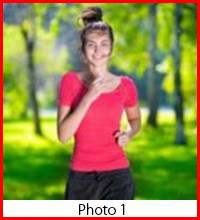
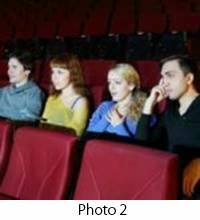
You will have to start speaking in 1.5 minutes and will speak for not more than 2 minutes (12–15 sentences). In your talk remember to speak about:
● where and when the photo was taken
● what/who is in the photo
● what is happening
● why you keep the photo in your album
● why you decided to show the picture to your friend
You have to talk continuously, starting with: “I’ve chosen photo number …”
ВАРИАНТ ОТВЕТА:
I’ve chosen photo number one.
● introduction
Taking photos is my hobby. If I have an opportunity to take a good picture, I never miss it. I have a picture to show you.
● where and when the photo was taken
This photo was taken a few years ago in a park not so far from my house. I go there quite often.
● what / who is in the photo
In the photo you can see my cousin Liza. She is slim and fit. She is wearing the red t-shirt that suits her perfectly well and dark trousers. Her arms are bent at her elbows. In the background of the photo there are wonderful tall green trees.
● what is happening
Liza is jogging in the park and she is smiling. The sun is shining through the trees. The weather is perfect for jogging.
● why you keep the photo in your album
I keep this photo in my album because she looks really happy and cute here. I like to see her happy.
● why you decided to show the picture to your friend
You know, I’ve decided to show you this picture because you once told me that you would like to jog with someone but you don’t have a partner. I thought that she could make a good partner and you could jog together.
● conclusion
Now you know how Liza looks. Hope you will enjoy jogging with her.
That’s all I wanted to say.
Посмотреть 60 фотографий, задание №3, надиктованных носителем языка.
Read by George William Dole
Task 3 / Photo №4
These are photos from your photo album. Choose one photo to describe to your friend.
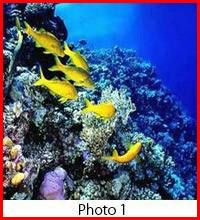
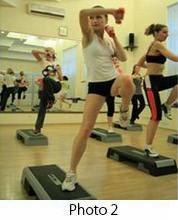
You will have to start speaking in 1.5 minutes and will speak for not more than 2 minutes (12–15 sentences). In your talk remember to speak about:
● where and when the photo was taken
● what/who is in the photo
● what is happening
● why you keep the photo in your album
● why you decided to show the picture to your friend
You have to talk continuously, starting with: “I’ve chosen photo number …”
ВАРИАНТ ОТВЕТА:
I’ve chosen photo number one.
● introduction
Taking photos is my hobby. If I have an opportunity to take a good picture I never miss it. I have a picture to show you.
● where and when the photo was taken
This photo was taken a few years ago in Egypt where I had a vacation with my family.
● what / who is in the photo
In the photo you can see beautiful corals and a school of yellow fish. It is an underwater realm with its beauty and mystery. The underwater landscape view is amazing. In the background you can see really blue water and a lot of underwater sea plants.
● what is happening
I was taking a scuba diving lesson and took my camera, which allowed me to shoot underwater beauty. As soon as the school of fish saw me they started swimming away.
● why you keep the photo in your album
I keep this photo in my album because it looks really beautiful and colorful. It reminds me of that fantastic time that we spent there.
● why you decided to show the picture to your friend
You know. I’ve decided to show you this picture because you have never been to Egypt and you have always wanted to take a few scuba diving lessons. Don’t give up on this idea. A lot of positive emotions are waiting for you.
● conclusion
Now you know how the underwater realm looks. Hope you will enjoy scuba diving there.
That’s all I wanted to say.
Посмотреть 60 фотографий, задание №3, надиктованных носителем языка.
Read by George William Dole
Task 3 / Photo №9
These are photos from your photo album. Choose one photo to describe to your friend.
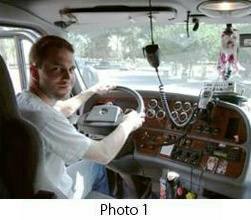

You will have to start speaking in 1.5 minutes and will speak for not more than 2 minutes (12–15 sentences). In your talk remember to speak about:
● where and when the photo was taken
● what/who is in the photo
● what is happening
● why you keep the photo in your album
● why you decided to show the picture to your friend
You have to talk continuously, starting with: “I’ve chosen photo number …”
ВАРИАНТ ОТВЕТА:
I’ve chosen photo number three.
● introduction
Taking photos is my hobby. If I have an opportunity to take a good picture, I never miss it. I have a picture to show you.
● where and when the photo was taken
This photo was taken a few years ago in my aunt’s appartment that is not so far from my house.
● what / who is in the photo
My Aunt Liza is in the picture. She is a tall and beautiful woman. She is wearing a grey jacket and red blouse with sort of a bow on her collar. Her hair is brown. Her glasses are on the middle of her face. There is a shelf with books in the background.
● what is happening
My Aunt Liza is a scientist. She is really happy to see me. Her left hand is lying on the pile of books. She is writing some notes with her right hand. She is standing between two piles of books and smiling.
● why you keep the photo in your album
I keep this photo in my album because she looks really happy and inspired here. I like to see her like this.
● why you decided to show the picture to your friend
I’ve decided to show you this picture because once you told me that you wanted to learn Chinese. Aunt Liza is also a Chinese teacher. So, I thought you might want to take her lessons.
● conclusion
Now you know how my aunt looks. I hope you will enjoy communicating with her.
That’s all I wanted to say.
Посмотреть 60 фотографий, задание №3, надиктованных носителем языка.
Read by George William Dole
Task 3 / Photo 10
These are photos from your photo album. Choose one photo to describe to your friend.
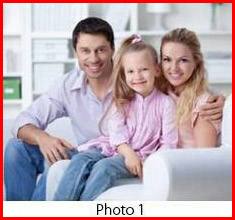
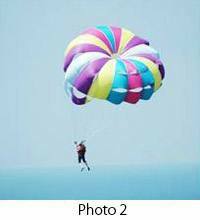
You will have to start speaking in 1.5 minutes and will speak for not more than 2 minutes (12–15 sentences). In your talk remember to speak about:
● where and when the photo was taken
● what/who is in the photo
● what is happening
● why you keep the photo in your album
● why you decided to show the picture to your friend
You have to talk continuously, starting with: “I’ve chosen photo number …”
ВАРИАНТ ОТВЕТА:
I’ve chosen photo number one.
● introduction
Taking photos is my hobby. If I have an opportunity to take a good picture, I never miss it. I have a picture to show you.
● where and when the photo was taken
This photo was taken a few years ago at my aunt’s Liza home that is not so far from my house.
● what / who is in the photo
In the picture you can see my aunt Liza, her husband Oleg and daughter Olga. Olga is wearing a pink blouse and jeans. Her hair is blond as well as her Mom’s. Oleg is wearing a white shirt and blue jeans. There are some bookshelves in the background.
● what is happening
The three of them are sitting on the white sofa in the living room and smiling. Olga is sitting between her parents on her mother’s lap. Oleg is sitting next to Olga, embracing them all.
● why you keep the photo in your album
I keep this photo in my album because they all look happy and cute here. I like to see them like that.
● why you decided to show the picture to your friend
You know. I’ve decided to show this picture to you because once you told me that your little brother Slava feels lonely because he has no friends. I think Olga will make a good friend for him.
● conclusion
Now you know how Olga and her parents look. Hope you will enjoy meeting them soon.
That’s all I wanted to say.
Посмотреть 60 фотографий, задание №3, надиктованных носителем языка.
Read by George William Dole
Task 3/5
These are photos from your photo album. Choose one photo to describe to your friend.


You will have to start speaking in 1.5 minutes and will speak for not more than 2 minutes (12–15 sentences). In your talk remember to speak about:
● where and when the photo was taken
● what/who is in the photo
● what is happening
● why you keep the photo in your album
● why you decided to show the picture to your friend
You have to talk continuously, starting with: “I’ve chosen photo number …”
ВАРИАНТ ОТВЕТА:
I’ve chosen photo number two.
● introduction
Taking photos is my hobby. If I have an opportunity to take a good picture I never miss it. I have a picture to show you.
● where and when the photo was taken
This photo was taken a few years ago at my aunt’s home, in the children’s room.
● what / who is in the photo
In the picture you can see my aunt Liza. She is dressed in a blue and white T-shirt. She is wearing black framed glasses. Her hair is brown. There is a plastic cup with pencils on the table. There is a shelf with files, some flowers, pig with a clock in the background.
● what is happening
My Aunt Liza is sitting at the table and drawing a picture. She’s holding a pencil in her right hand and she is keeping the paper still with her left hand. She is smiling.
● why you keep the photo in your album
I keep this photo in my album because Aunt Liza looks happy and cute in it. I like to see her like that.
● why you decided to show the picture to your friend
I’ve decided to show you this picture because once you told me that you wanted to learn to draw and Aunt Liza can help you. So, I thought you might want to take a few lessons from her.
● conclusion
Now you know how my aunt looks. Hope you will enjoy meeting her.
That’s all I wanted to say.
Посмотреть 60 фотографий, задание №3, надиктованных носителем языка.
Read by George William Dole
NEXT 5 TASKS





















